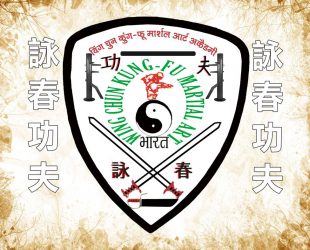Introduction: Wing Chun, a Chinese martial art renowned for its efficiency and practicality, encompasses various techniques that enable practitioners to defend themselves effectively. Among these techniques, the center line punch holds a prominent place. This article explores the concept and benefits of Wing Chun’s center line punch, highlighting its effectiveness as a powerful striking technique.
Understanding the Centerline: Understanding the Center Line Concept In Wing Chun, the center line refers to an imaginary vertical line that runs down the center of the body, dividing it into two equal halves. The center line is regarded as the most direct and efficient path for delivering strikes to an opponent. The center line punch involves delivering a punch along this line, targeting an opponent’s vulnerable areas with precision.
Economy of Motion and Simplicity One of the key principles of Wing Chun is economy of motion. The center line punch exemplifies this principle by employing a direct, straight-line strike without unnecessary movements. By eliminating elaborate wind-up or circular motions, the center line punch saves time and energy, enabling quick and effective counterattacks.
Targeting Vital Points Wing Chun’s center line punch focuses on striking an opponent’s vital points along the center line. By targeting areas such as the throat, solar plexus, sternum, or groin, this punch aims to incapacitate the opponent swiftly and efficiently. Precise targeting of vital points enhances the effectiveness of the punch, maximizing its impact.
Speed and Timing The center line punch emphasizes speed and timing as essential components of effective striking. Wing Chun practitioners train rigorously to develop explosive speed in their punches, enabling them to surprise opponents and create opportunities for counterattacks. The precise timing of the punch, executed with the element of surprise, enhances its effectiveness.
Structure and Body Alignment To generate maximum power, the center line punch relies on proper body structure and alignment. Wing Chun practitioners learn to generate power from the core and transfer it efficiently through the limbs. The alignment of the body ensures that the force generated from the punch is effectively delivered to the target, maximizing impact.
Close Combat Advantage Wing Chun’s center line punch is particularly advantageous in close-quarters combat. By striking along the center line, practitioners can effectively neutralize an opponent’s attacks and maintain control of the fight. The punch can be executed from various defensive positions, allowing for quick and precise counterattacks in tight spaces.
Integration of Trapping and Striking Another notable aspect of Wing Chun’s center line punch is its integration with trapping techniques. Wing Chun emphasizes the concept of “sticking” to an opponent’s arms, redirecting their attacks, and creating openings for strikes. The center line punch complements these trapping techniques by swiftly exploiting the exposed center line of the opponent.
Adaptability in Self-Defense Situations The center line punch’s effectiveness extends to real-world self-defense scenarios. Wing Chun’s focus on simplicity and directness allows practitioners to respond quickly and effectively to an aggressor’s actions. The punch can be modified and adapted to different situations, making it a versatile tool for self-defense.
Continuous Training and Application Mastery of Wing Chun’s center line punch requires continuous training and practice. Practitioners must develop the necessary speed, precision, and timing through repetitive drilling and sparring. Regular application of the technique in simulated combat situations helps refine its execution and enhances its effectiveness.
Conclusion : Wing Chun’s center line punch stands as a testament to the art’s effectiveness and practicality. Its directness, simplicity, and focus on vital points make it a formidable striking technique.
Sifu Sonu Kumar Giri.
Wing Chun Academy, Mumbai

